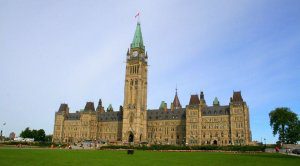 Hiking taxes is the worst economic choice to achieve both growth and fiscal sustainability, writes Jack Mintz in the Financial Post. Below is an excerpt of the article, which can be read in full here.
Hiking taxes is the worst economic choice to achieve both growth and fiscal sustainability, writes Jack Mintz in the Financial Post. Below is an excerpt of the article, which can be read in full here.
By Jack Mintz, July 29, 2020
With governments around the world taking on massive public debts, gloom-and-doomers are forecasting massive tax hikes to feed the beast. We heard the same story in 2008 when the financial crisis led to a sharp rise in net public debt — almost 30 percentage points of GDP on average in the OECD by 2012.
So, what did advanced countries do in the face of yawning deficits after 2008? The accompanying graph shows that on average in the OECD taxes peaked at 31 per cent of GDP in 2007 as OECD economies grew strongly after the 2002 recession. Taxes/GDP then fell to 29 per cent by 2012, in part reflecting the economic downturn after 2008. Eventually, by 2014, taxes reached the same level as in 2007. But after that they remained virtually flat as a share of GDP.
As for net public debt, after its initial jump of 30 points of GDP among OECD countries, it stayed high as a share of GDP. Consolidated government spending initially jumped from 38 per cent of GDP in 2007 to 44 per cent in 2009 but then tracked back to 38 per cent by 2017.
Canada was somewhat different. As the graph shows, Canada’s consolidated government tax burden was uncompetitive compared to the OECD average in all years. However, the gap shrank after 2000 with federal and provincial tax reductions. As with the OECD average, taxes fell by a point and half to 31 per cent of GDP from 2007 to 2012 and remained at this level until 2015, after which they rose to 33 per cent of GDP, the same level as in 2007.
***TO READ THE FULL ARTICLE, VISIT THE FINANCIAL POST HERE***




